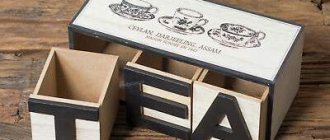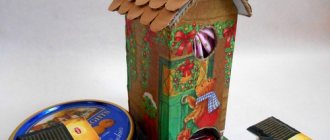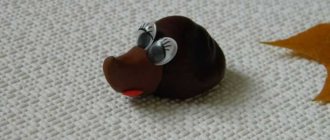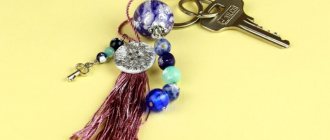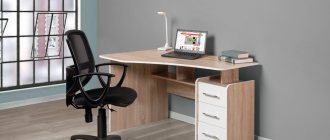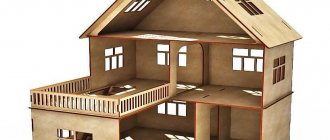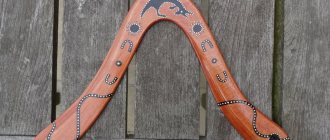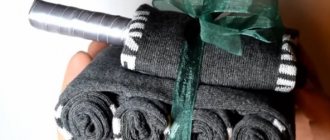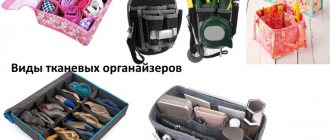A miniature toy house is a great way to give children the opportunity to put their favorite toys into “comfortable apartments.” Agree, many in childhood really wanted dolls or robots to be able to move around a cozy interior, walk around their own yard, and even decorate their house for the holidays. While you can always buy a fabulous home like this from a store, a homemade "build" is much more special and unique. See below how to make a toy house out of a box.
Features of material selection
The choice of materials for building a house with your own hands should coincide with financial capabilities, the amount of free time and the level of skill.
- Paper . Scrapbooking paper is suitable for these purposes: it is thick, does not fade, and has a wide selection of textures and prints. Ready-made diagrams can be printed on regular office paper.
- Cardboard . Ideal options would be binding, beer, corrugated three-layer. The latter is more difficult to cut, but more affordable (for example, household appliances or weighted candies are usually packaged in it). The rigidity of cardboard allows you to add more floors to the project.
- Boxes . Their characteristics do not differ from the previous material. One large or several medium-sized ones, always whole boxes, are suitable for work.
- Plywood . It is distinguished by its availability, ease of processing, the ability to implement complex projects, and its price-quality ratio. At the same time, it requires certain skills in working with sawing tools and precise design. The recommended plywood thickness is at least 6-7 mm. You should definitely pay attention to the E0 marking - its presence confirms the low formaldehyde content.
- Tree . The material is more expensive and difficult to work with, requiring expensive tools. Suitable for making large-sized multifunctional shelving houses.
Comparative characteristics of materials:
| Material | Price | Durability | Complexity |
| Paper house | Very cheap | Low | Very easy |
| Cardboard house | Cheap | Low | Easy but requires patience |
| House made of boxes | Very cheap | Low | Very easy |
| Plywood house | Moderately expensive | High | Medium difficulty, requires tool skills |
| Wooden house | More expensive than average, but cheaper than store bought | Very high | Complex, cutting on professional equipment is desirable |
Practical tips before starting work
Before the decorating process:
- Look through all the shoe (and other) boxes in the house to select the newest, intact, thick cardboard ones.
- Distribute what items you will use the boxes for in the future.
- Prepare a place (with good lighting) and tools for work.
- Collect everything you might need for wrapping materials and small decorations, buy what’s missing (glue, paper).
- Decide on a technique for decorating boxes with your own hands (quilling, decoupage, origami, etc.).
Decorating the box with pieces of wallpaper and buttons
Experienced craftsmen know that creativity requires enough space on the table to lay out the necessary items. It is advisable to remove everything unnecessary so that it does not distract in the creative process. The free time factor is also important - you don’t always want to return to the unfinished work of decorating boxes, but you need to start when you have the motivation and desire to create with your own hands.
Remnants of wallpaper are a suitable material for decorating boxes
Important! Think bigger, use other people's ideas, maybe you have a more interesting scrap, wallpaper or wrapping paper than in the example samples. The final result directly depends on them.
Original box decor with jute rope
For most types of needlework, approximately the same set of tools and available materials is used:
- glue (PVA, liquid nails, silicone, etc.);
- sharp scissors and a stationery knife;
- stapler with staples;
- double-sided and plain tape;
- square and ruler;
- yarn, ribbons, threads;
- spray paint;
- eraser, marking pencil, chalk, marker.
Before work, take the necessary measurements - the basic material should be enough to decorate the boxes with your own hands. Decoration elements are easy to vary.
See also: Create bottle decor with twine with your own hands
Drawings and dimensions of a paper house
The dimensions of a paper house are limited only by the size and density of the material used. Large models made from thin paper will not hold their shape. In cases where the material is dense but small in size, the house is assembled from individual parts.
The peculiarity of the paper house drawing is that it is made up of a single canvas.
At the junctions of the walls, as well as on the roof slopes, additional narrow strips are provided for applying glue or double-sided tape. In the finished printouts, the houses are drawn in detail; all that remains is to cut them out and glue them together. Creating a sketch yourself leaves room for creativity and layering when decorating.
Paper house option:
- 4 open rooms separated by two sheets of paper.
- The basic drawing consists of 2 rectangular parts with transverse slots in the middle. The depth of the cuts is up to half the width of the elements.
- The dimensions of the blanks correspond to the height and double length of the future rooms.
Roof tiles
Add some tiles to the roof for a realistic effect. Gather enough wood sticks to cover the roof, then hot glue them in place. To make it easier, glue wooden sticks together along the width or length of both sides of the roof. For a natural look, glue on tufts of moss. You can buy this at any flower shop.
Wet a Paper Towel: How to Chop Onions Without Tears
A Japanese satellite for collecting space debris will be launched from a Russian side
Roza Syabitova advised women how to avoid divorce
Paper house for dolls
To work you will need a drawing, scissors and glue.
With their help you need:
- Carefully cut the workpiece along the contour.
- Fold along the dotted lines, giving the model volume.
- Apply glue to the special valves provided in the drawing.
- Glue the house together.
- Decorate with textured printed paper.
Such models do not imply interior decoration and act as decoration around which the game takes place.
The disadvantage of the model is that it can be conventionally called a dollhouse, since the entire structure is very schematic. But this house provides a play space. The child has the opportunity to create an interior in each room and freely move the doll inside. At the same time, the design takes up little space and can be easily disassembled or folded for storage.
The work comes down to two steps:
- Cut both elements taking into account the windows, doors and central slots.
- Connect the parts with cuts facing each other.
Next, you should decorate each room as you wish. Based on this drawing, you can create more complex models. For example, if you lengthen one of the elements and make 2 slots instead of 1, inserting one base part into each of them, you will get a 6-room house.
Jewelry box
If you still have a beautiful box that you hate to throw away, then put fabric rollers in it and you will get an excellent box for storing jewelry.
TIP: it is better to make rollers from a soft material, like felt or flannel
Drawings of a cardboard house
You can outline the details right away on cardboard, but it is much more convenient to have before your eyes the entire list of necessary elements, their quantity and sizes.
A schematic representation of the component parts of the house is enough, the main thing is to take them all into account:
- Side wall (2 pcs.): a rectangle, the height of which is equal to the uppermost interfloor ceiling, and the width is the desired depth of the rooms.
- Back wall (1 piece): a rectangle with a width equal to the length of the house and the same height as the side walls.
- Pediment (2 pcs.): an isosceles right triangle, the hypotenuse of which is equal to the width of the side wall.
- Floor of the 1st floor (1 piece): a rectangle with a height equal to the width of the side walls, and a length equal to the width of the rear wall.
- Interfloor ceiling (1 piece): a floor part of the same dimensions, but with a cut-out staircase opening.
- Interior partition (1 piece): U-shaped figure with a width equal to the depth of the house and a height corresponding to the height of one floor.
- Roof (1 piece): a large rectangle, the height of which is slightly greater than the sum of 2 gable legs, and the length is slightly greater than the length of the house.
If you have a large piece of cardboard, the number of individual elements can be reduced by combining the side walls, gables, floor of the 1st floor and rear wall into one part in the drawing. Doorways will not be needed if the interior partitions are made one third narrower than the width of the house.
Chalk board
You can use shoe box lids to make a mini chalkboard very easily. To do this, you need to paint the lids with black acrylic paint and you have mini chalkboards that will be great fun for children.
These boards can also be used as signs at a large event, or they can also be used as large price tags. In order to change the inscription, you just need to erase the chalk and write a new one again.
Detailed master class on how to make a chalk board
Connecting rooms
It is more convenient to connect the walls with wide masking tape. It does not damage the cardboard when removed, does not make the work sloppy and does not interfere with decoration. Adhesive Moment Crystal will help fix cardboard walls relative to each other: it sets quickly and leaves no marks.
To connect the walls to each other you should:
- Coat the cut of the side wall with glue and press it tightly against the edge of the rear wall, trying to maintain an angle of 90 degrees.
- Cover the resulting corner with masking tape on the outside and inside, so that the middle of the adhesive tape is at the junction of the walls.
- Similarly, attach the second side wall, forming a U-shaped frame for the future house.
- Coat the cut of the floor part with glue on three sides, press it to the edges of the walls, while simultaneously adjusting the internal corners of the house.
- Reinforce each joint between the floor and the wall with adhesive tape on the outside and inside.
- Apply glue to those sections of the inner wall that will be attached to the floor and the back of the house.
- Press the part strictly perpendicular to the floor and parallel to the side walls of the house (check the distance between the walls below and above with a ruler, adjust if necessary).
- Cover the resulting corners on both sides of the partition with masking tape.
Pasting the corners on both sides will make the structure stronger and fix the shape more rigidly. To ensure a tighter fit of the tape to the surface, it is recommended to forcefully iron the gluing areas with the edge of a ruler or plastic card.
Why do cats need a cardboard house?
The cats' interest in cardboard boxes attracted the attention of not only their owners, but also scientists. There have been debates and theories about this phenomenon for a long time.
The most realistic ones include:
- Feeling of security. If you observe representatives of cat breeds in the wild, you will find that they wait out danger in caves, tree hollows or on their tops. Their domestic counterparts retained the original instinct of self-preservation, so a cardboard box became an ideal refuge from danger.
Interesting! Workers at cat shelters have noticed that newly arrived animals adapt more easily if a box is placed next to them.
Most likely, having climbed into it, they can calm down, develop a behavior strategy, or hide in case of danger.
- Smell and characteristics of cardboard. Pets have a great interest in paper products. They prefer to rest on a newspaper or bookshelf. The reason for this behavior was the raw material used to make paper products, namely wood.
Humans can't smell the scent of wildlife, but cats can hear it clearly. In addition, cardboard objects are excellent at blocking the flow of cold air and retaining heat. - Personal space. Having climbed into the box, the pet gets the opportunity to be in an environment where only its smells are present. It becomes a room that allows you to relax and retire from the annoying world around you.
- A game. Instincts derived from the wild are still present in the blood of domesticated animals. Therefore, a cat may perceive a cardboard object as an opportunity to sit in ambush.
A caring owner can make a paper bow on a string and throw it to the pet so that it can jump onto it from its shelter.
Connecting ceilings to floors
The ceiling of one floor is the floor of the next. To prevent peeling and sagging, the interfloor ceiling is secured to a support.
- For accuracy, it is recommended to draw a line along the perimeter of the frame at the level of the upper boundaries of the internal walls parallel to the floor of the floor.
- Cut long strips of cardboard no more than 1 cm wide. If the thickness of the material is insufficient, the strips can be cut twice as large and glued together.
- Glue the resulting parts with the wide side around the perimeter of the house, aligning with the control line. There should be a uniform protrusion that encircles the outer walls from the inside.
- Apply glue to the sections of all the parts on which the ceiling will lie, as well as the sections of the ceiling itself.
- Lay the ceiling piece, making sure the internal walls are perpendicular.
- Apply masking tape to the joints of the walls and floor of the upper floor, making sure that the tape goes all the way to the corner without deforming it.
Jewelry organizer
The lid from the box can be as useful as the box itself. For example, it can be used as a jewelry holder. To make such an original thing, you need:
- cover the lid of a shoe box with burlap,
- then attach it to the wall,
- fasten with nails through the cardboard, on which bracelets, chains and other jewelry will be hung.
DIY dollhouse from a box
It is easier and faster to build a dollhouse from boxes with your own hands than from individual sheets of cardboard.
For work you will need the following materials and tools:
- cardboard box from large household appliances;
- marker;
- scissors, stationery knife;
- masking tape, glue;
- colored paper, braid, pieces of fabric - everything that can be useful in decorating a finished house.
Before starting work, you need to make sure there are no defects on the cardboard, cut off excess tape and remove the staples from the stapler.
- Mark the middle of the box with a marker. It is convenient to take the connection line of the folding parts of the box as a guide.
- Cut along the line into 2 equal parts. One half will serve as the basis for the house.
- One of the folding parts will become the floor of the first floor. It should be secured to the side walls of the box using tape.
- Cut off the corners of the opposite flap to form a roof gable
- At this stage, until additional volumetric parts are glued in, it is more convenient to cut through windows and doors. First, you need to mark with a marker the future location of the interfloor ceilings. This will allow you to choose the correct location of the windows. It is more convenient to cut them with a stationery knife. Cut the front door on one of the side walls of the house.
- Cut off both opening parts from the second half of the box. They will serve as floors for the second floor and attic. Make an opening for the stairs for each part: cut the upper left part in the shape of a small square or rectangle.
- Using tape, attach the ceilings along the previously marked lines. Openings for stairs should be in opposite, inner corners of the house.
- Cut the roof slopes from the side walls of the remaining part of the box. Use tape to glue them to the pediment and walls. Cover the top corner of the roof with tape.
- Attach cardboard ladders to the openings in the floor.
A doll house made from boxes can be furnished with homemade furniture
The construction of the dollhouse from the box is completed. All that remains is to decorate it and arrange the furniture.
Yard and other details
Use shells or rocks to make walking paths. Create a real garden for your fairytale house. Use small shells or stones to create paths leading to a fairytale home. You can also use other items such as buttons. If you are using a sunken platform for your structure, try filling it with soil first.
Use spools or wine corks to make tables and chairs. If there are none, you can simply buy something suitable in the store. Try to create real coziness by taking some of the following steps:
- Use scraps of fabric or paper to make tablecloths.
- Use thumbtacks or acorn lids to make utensils. Thimbles are great for cups.
- Paint the cork pieces in a mushroom style.
- Use tufts of moss to make chair cushions.
- Use matchboxes to make other pieces of furniture. Collect several small cardboard boxes, paint them or cover them with paper, and then decorate them to look like dressers, ovens, or other appliances.
- Use markers to draw on parts like drawers or oven doors to make them more realistic.
- Glue beads to create door handles.
- Glue beads to the base of a matchbox to create a mini bed.
This is how we got such a wonderful house in which toys can live. Such a creation will give the child the opportunity to reveal his creative potential and show his imagination.
Found a violation? Report content
Features of working with plywood
Dollhouses made of plywood are lightweight, environmentally friendly, and relatively low in cost. But, unlike houses made from boxes, plywood houses are stronger , can withstand heavy loads and will last longer. When choosing this material, it is necessary to take into account the features of its processing.
- The tool for cutting parts must be very sharp and selected in accordance with the thickness of the sheet: up to 1.5 mm - can be cut with a knife, 1.5-6 mm - with a hand jigsaw, over 6 mm - with a jigsaw.
- It is advisable to saw the sheet along the grain. In the case of a transverse direction, it is recommended to make several cuts along the entire length of the future cut, which will reduce the likelihood of cracks and chips.
- Finished parts should be carefully sanded.
- It is better to connect parts using wood glue. The connection will be stronger if the fibers of the bonded surfaces are in the same direction.
- For nails and screws, you need to pre-drill holes and place washers under the heads.
Compliance with these rules will make the work easier and protect against unnecessary consumption of material.
Ladder
Create stairs using craft sticks or branches. Cut two sticks so that they are slightly higher than your first floor, and a row of smaller sticks that will be about three centimeters long. Lay two long sticks side by side, then glue smaller sticks along them to make a ladder. Hot glue works best for this, but you can use any other glue.
Required tools and materials
Making a dollhouse from plywood is possible for anyone with minimal skills in working with tools, desire and patience.
To build a house you will need the following tools and materials:
- plywood 6-7 mm thick;
- narrow wooden slats;
- small nails or a construction stapler;
- jigsaw (can be replaced with a manual one);
- drill with a thin drill bit;
- sandpaper for processing the edges of parts;
- wood glue;
- mounting tape;
- a simple pencil and tape measure;
- decor for decorating a finished house.
The amount of material is calculated according to the drawing and depends on the size of the project.
For example, a small tabletop house will require 4-6 main parts, while a multi-story floor house can use 4-6 sheets of plywood. For an accurate calculation, the finished sketch is disassembled into its components, and a detailed drawing is constructed for each element.
After the parts are completely laid out on paper, the total area of the required material is calculated.
Picnic box
Using large or medium-sized shoe boxes, you can make a charming and very convenient picnic box that will be a great replacement for a standard basket. Decorate the box with decoupage or simply glue the fabric.
- A shoe box can be decorated with fabric or colored paper using PVA glue ,
- make handles from braid and decorate them at your discretion.
Drawings for a plywood house
A do-it-yourself doll house made from boxes can serve as a model when creating a drawing yourself. A visual model, no matter how complex it may be, will allow you to evaluate the scale of the idea, the actual dimensions of the product, identify the features of the main parts and possible weak points of the design.
Story about creating a dollhouse from plywood:
For the simplest house with a pitched roof, you will need drawings of the basic elements.
- Side walls with an opening for the front door. The difference in the height of the walls will determine the angle of the roof.
- Rear wall including pediment. The height differences on opposite sides must correspond to the side parts.
- Single pitch roof.
- The base should extend beyond the house for better stability.
- Interfloor ceilings with staircase openings, which are located in opposite corners so that they do not end up under the stairs leading to the floor above.
- Interior partitions with arched doorways.
Window openings are located on the rear wall, side elements and roof according to the sketch. A front opening cover can be added if desired. In this case, it is more appropriate to place windows on it. The dimensions of the parts depend on the available space where the house according to individual wishes will stand.
The height of the floors should be comfortable for playing - this is 40-50 cm.
It is recommended to install the uppermost ceiling (attic or loft) no higher than the child’s eye level. Rooms that are too deep are not convenient for playing, especially on the extreme floors. Under the folding roof you can place a hidden attic box where doll clothes will be stored.
Storage basket
To create an imitation of a real wicker basket, it will be enough to glue the shoe box with a rope turn to turn; you can use ordinary PVA glue for this.
Inside, you can sew a bag of white soft fabric the size of the box, so you can very easily make with your own hands a very cute decorative basket for storing small items, which will be in no way inferior to a real wicker basket.
Master class on basket weaving
Step-by-step instructions for a plywood house
A do-it-yourself doll house from boxes can be assembled in a couple of hours without a preliminary drawing, unlike a plywood house, where precision and accuracy are very important, which require time. Carefully double-checking all dimensions will make it easier to fit and assemble the elements.
- Carefully and accurately transfer the image of the elements onto a sheet of plywood using a template and a pencil.
- Using an electric jigsaw you can cut parts faster and with better quality.
- To cut out window openings, use a narrow drill bit to make auxiliary holes. Cut along the contour of the window and door.
- All cuts of each element must be sanded to avoid splinters and scratches.
- On the prepared parts, mark with a simple pencil the location of interfloor ceilings and internal partitions.
- It is more convenient to start the assembly by gluing the external walls, strengthening the outer corners with mounting tape.
- Glue the internal elements according to the markings.
- Connect both pieces. For more reliable fastening of the ceilings, it is recommended to attach ceiling moldings made of lath or narrow strips of plywood around the perimeter of each room.
- Glue the roof slope to the gable and side walls.
- Glue the finished house to the base.
- Reinforce all joints of parts with mounting tape. Leave the house for a day for the glue to dry completely.
- For facade decoration, acrylic paint on wood is used as one of the options.
- When decorating the interior, available materials are selected that do not create large loads: paper, fabrics, pieces of fur.
- To make the stairs you will need rectangular pieces of plywood with a width equal to the openings prepared in the floors. The steps are made from cut narrow slats with a triangular cross-section, thin wooden blocks sawn diagonally or strips of corrugated cardboard.
Stairs are installed after interior finishing work, so as not to create hard-to-reach areas.
Organize your beads
The yokes will find use for the lid, covering it with burlap or velvet. Shiny jewelry looks great against such a background. And the man will attach the hooks or pins - he is always present with the yoke.
Interesting fact. According to an article in Glamor magazine, the average woman will purchase 469 pairs of shoes in her lifetime.
Wooden house master class
A do-it-yourself dollhouse made from boxes or plywood has one significant drawback: the fragility of the structure. Large models that combine the functions of a chest of drawers or a rack require reliable fastenings and are made of wood.
When purchasing sheet material, it makes sense to immediately order cutting of parts.
This will reduce labor costs and compensate for the lack of expensive tools. The cut line made with professional equipment is more accurate and even, which will significantly facilitate further processing of the wood. But, even in this case, the process of making a house remains quite difficult for inexperienced craftsmen.
You can simplify the task by using old wooden furniture as a finished base.
To work, you need to prepare materials and tools according to the list:
- Wooden rack.
- Wood putty.
- A sheet of plywood 20-25 mm thick.
- Fiberboard sheet for interior partitions and the back wall of the house.
- Drill-driver, set of drills and screws.
- Wood glue, masking tape, liquid nails
- Sandpaper.
- Primer and white acrylic paint, universal colors in orange and brown, varnish.
- Decoration materials.
- Scissors, pencil, ruler, tape measure.
- Thick cardboard.
- Brush and roller.
- Construction stapler or small nails and hammer.
- Hand jigsaw.
The list may vary slightly depending on the condition of the furniture being remodeled and the choice of finishing.
Additional materials are replaced with similar ones or those whose characteristics are more consistent with the design. Before starting work, the piece of furniture being remodeled must be removed from unnecessary parts: doors, drawers, guides and similar elements that are not useful.
The entire subsequent process takes place in several stages:
- Making a simple doll house with your own hands begins with the stage of preparing and processing the resulting wooden box. The surface of the former rack should be thoroughly cleaned and treated with sandpaper to remove the old coating. Fill excess holes, chips, and dents with wood putty. After the putty has completely dried, sand the surface.
- Mark windows on the side walls with a pencil. Cut out the openings with a jigsaw, having previously drilled auxiliary holes. Sand the edges until smooth.
- Cut out interior partitions with doorways from a sheet of fiberboard. Secure between the shelves with glue. For greater stability to the ceiling and floor, glue strips of thick cardboard, sandwiching a thin interior wall between them.
- Cut 2 rectangles from thick plywood with the same width , equal to the depth of the rack, and different lengths, which depend on the length of the cabinet. For example, for a house 80 cm long, parts 55 cm and 60 cm will be sufficient. The edges of the boards are tightened with screws at right angles. To do this, drill 3-4 holes along the short side of the long part at an equal distance from each other. At the end of the second part, duplicate the holes. Apply wood glue to the joints and fasten both elements with screws. Sand the workpiece with sandpaper, paying special attention to the cut areas.
- Clean the parts of the house from dust and prime them. This measure promotes better adhesion of paint and glue to the surface and reduces their consumption.
- While the primer dries, cut out rectangles of the same size from thick cardboard . Paint the blanks with orange acrylic paint. Cover the dried rack inside and out with a layer of white acrylic paint. Glue cardboard “bricks” on the outer side walls in a checkerboard pattern, leaving small gaps in the masonry for greater realism.
- Paint the roof dark brown and wait until the paint dries completely. Then install it on top of the house, adjust the position and secure it with screws. To do this, 3-4 through holes are drilled through the internal joint of the side walls and the ceiling with a drill in a direction perpendicular to the roof slopes and screws are screwed in.
- Cover the entire surface of the house with matte varnish. Dry well.
- Cut out the back wall from fiberboard. Secure along the contour of the house with a construction stapler or small nails.
- Decorate the interior, arrange toy furniture.
Making a doll house from boxes is much faster and easier. But even a simple man in the street can make a wooden model if he takes a fresh look at old things.
Storage box
Shoe boxes are an excellent material for storing various things; in order for them to have an original and attractive appearance on storage shelves, they are quite easy to transform.
- To do this, you just need to cover them with a satin card using PVA glue.
- You can stick a sign on the end of the box with a signature indicating what is stored in this box, this will make it easier to find the right thing.
5 master classes on how to make a storage box with your own hands
Features of finishing a dollhouse
Interior decor depends entirely on individual preferences. When choosing materials and finishing methods, the advice and ideas of experienced craftsmen will not be superfluous.
Recommendations:
- The paint must match the surface being painted: gouache is chosen for cardboard, and safe acrylic compounds are used for wood.
- For fragile houses, the decor is light and does not overload the structure.
- The presence of a drawer in the podium or a blind attic with a lid in wooden houses will allow you to store additional interior items or doll outfits in one place.
- Scrapbooking paper is universal in decorating a dollhouse: it is thick, does not fade, and has a huge variety of designs and textures. A small pattern will look more believable as wallpaper; a “wooden” print will add realism to the facade or floor.
- Handmade toy furniture will highlight the uniqueness of the dollhouse. You can make a beautiful chair from a plastic glass. The fireplace is easily assembled from matchboxes. From two cardboard blanks and a mat you will get a bench.
- Textiles will add comfort and texture to the interior. It is more convenient to attach curtains in a house from a box using hot glue. Velvet or velor will imitate carpeting.
- Instead of stairs, you can make an elevator cabin , which the child can raise and lower using a chain.
This is only a small part of what can be implemented in the interior of a house. The use of interesting techniques, such as decoupage, makes the decor possibilities endless.
Window
Decorate your windows with curtains, trim and magazine designs. Start by filling the window with paper or cellophane, then create a frame. Here are some more creative ideas to get you started:
- Cut squares of blue or clear cellophane, then glue it behind the windows to make glass.
- Stick a magazine picture outside the window if you want your child's toys to have a good view.
- Glue coffee stirrers or craft sticks around windows to create window frames. You can also add more materials to create a lattice.
- Cut small rectangles of fabric, then glue them to each side of the window as curtains.
Window and door decoration
Windows and doors are designed in accordance with the main material of construction. The stronger the model, the more complex the door fastenings and the more detailed the decor.
- In paper houses, windows and doors are drawn. The front door is cut out on three sides. Windows are cut according to the picture: with sashes or a full opening. It is not advisable to cut openwork grilles and lintels - thin parts will tear very quickly during play, giving the house a sloppy look.
- In houses made of corrugated cardboard, the door is cut in the same way. If the model is assembled from beer or bookbinding cardboard, then the door part is cut out completely. For fastening you will need a small piece of gauze or bandage, strong paper and glue. Insert the door into the opening and coat it with glue, grabbing the part of the wall to which it will be attached. Place a piece of gauze on top and again apply a thin layer of glue. Cut a rectangle out of paper equal to the door and glue it on top of the gauze, connecting the door leaf to the wall. Gauze will add strength to the fastening, and paper will prevent sagging. For decoration, stick an image of a real door on the part. Cut out 2 frames from cardboard and paste them over the doorway on both sides. Window openings are also designed.
- In wooden houses, the doors are secured using piano hinges. The doorway is designed in the same way as in the previous case. The decor can be complicated by imitation brickwork, the presence of a door knocker or a bell. Window openings on the outside can be decorated with “glass” made of transparent plastic. Decorate the top with a wooden photo frame. Make a frame from cardboard on the inside. Using stained glass paints on a plastic window will make the facade bright and unusual.
- Interior doors are usually not installed. An arched opening or installing a narrower wall is sufficient.
The image is created by the details: even the simplest house will become brighter and more interesting if you pay attention to the windows and doors.
Furniture
Of course, dolls simply need furniture! And playing with an empty house is not interesting. What can you think of?
Bedroom furniture
Bedroom furniture can be made from paper using the origami technique, glued from cardboard and laid out, but the most comfortable and beautiful option is upholstered furniture made from cardboard, foam rubber and fabric. You can glue everything using regular PVA, although it will take a long time to dry. Instead of foam rubber, you can take padding polyester or batting, or in extreme cases, cotton wool.
Bed MK
Step-by-step photos of production - enlarge when clicked:
Armchairs
Photos enlarge by click
Kitchen
The kitchen can be filled with a refrigerator, stove, countertop, beautiful chandelier and dining table. Cardboard and ice cream sticks are also suitable materials.
If you have a 3D pen, you can make furniture out of plastic.
Cardboard plate
Lockers
Cabinets, shelves, and a refrigerator are simply made from cardboard. Easy to glue with hot glue.
Furniture for kitchen
Furniture - chairs, a table - very beautiful ones made from ice cream sticks. You can cut such sticks with large scissors, but be careful, they can crack in half. You can glue with instant or hot glue.
Little things for the kitchen
You can put a bird in a cage in the kitchen, or put a box of fruit or flowers. Detailed master classes in the photo. Enlarge on click.
Fruits, vegetables, dishes
The easiest way to make fruits, vegetables, and dishes is from plasticine . To prevent the product from getting dirty and losing its shape, it is coated with transparent nail polish.
You can make vegetables from salt dough - they dry out and look like they came from a toy store. Play do is also used to make food, but my play do cracks after it dries. Therefore, I prefer to make salt dough: 1 glass of flour + 1 glass of fine salt + water, knead a very stiff dough.
Also a very good option is air self-hardening plasticine (new material). It is cheap, bright, and when it hardens it is elastic, somewhat similar to hard rubber. We sculpt as from ordinary plasticine and leave to dry overnight.
How to make a roof
If possible, for self-production, it is recommended to choose simpler forms of roofing, with simple fastening.
- For a paper house, the roof is cut out and glued according to the diagram.
- In cardboard models with a gable roof, it is better to place the gables at the ends. Then the roof will have reliable support. To make it you will need a large piece of soft corrugated cardboard. To calculate the dimensions, you need to measure the length of the house and the length of the gable slopes. The roof should have small allowances on each side, like real roofs. Almost the entire middle is cut out from the front to provide an accessible view of the upper floor. The sections of the pediment and rear wall are coated with glue. The roof part is placed on top and pressed lightly for better gluing.
- In wooden houses, shed roofs are popular, which rest on one side wall and go down to the second, shorter one. The back wall also serves as support. This roof is secured with glue or small nails.
- For a gable roof on the top floor, an interior partition is provided, which serves as additional support. In cases where it is impossible to install a partition, the slopes are additionally connected from the inside by a jumper in the upper part of the roof. This method is convenient for cardboard roofs. Heavier materials are more securely reinforced with small-section wooden blocks, which are assembled in the shape of a triangle and, like a gable, support the roof at the front of the house, leaving access to the attic. The ridge of a gable roof is glued or tightened with screws.
When choosing material for a dollhouse, you can use a short table with comparative characteristics. The comparison is very arbitrary, since with a lot of experience you can create a very complex model out of the box, which not everyone will repeat. And make a budget wooden house with your own hands from an old chest of drawers.
Author: Momina Anastasia
Article design: E. Chaikina
Paintings or panels on the wall
An ordinary lid from a shoe or candy box can be turned into a real work of art that looks like a real artistic canvas or decorative panel.
- To do this, just cover the lid with decorative paper or white paper and draw a pattern yourself.
- Then simply hang the lid on a nail in the wall and you can admire this work.
How else can you make paintings for your home - a detailed master class.
Pasting with self-adhesive film
Self-adhesive is an excellent option for those who like “clean” work. You don't need glue or tape. All you need is a roll of self-adhesive paper and scissors.
Progress:
- Place the shoe box in the center of a piece of sticky paper. Wrap it tightly. Bring the edges into the center to the full depth. Mark the required length and angles.
- Cut out a rectangle.
- Cut the corners to create a cross-shaped piece. Use the pieces to make corners for the box. Or immediately provide allowances that you will bend at the corners.
- Now is the most important stage. To ensure that the self-adhesive lays flat, lift the protection at the edge and apply the adhesive layer to the inside of the box. Gradually remove the protection and smooth the film with a cloth. Move from the middle of the box to the outer side, the bottom. Cover the opposite side and the other 2 sides. If there are any bubbles, carefully prick them with a needle and smooth them out. Warm up the uneven areas with a hairdryer. The gift box will be perfect!
Try mirror, velvet or matte self-adhesive. They will give the gift box a chic, expensive look. Or you can use the option with a wood pattern to create the effect of a chest.
How to turn a shoe box into a gift box?
Shoe boxes are a great base for gift wrapping. They are durable and spacious. You only need to decorate the outside. Different materials are used for this:
- wallpaper;
- wrapping paper;
- self-adhesive film;
- textile.
At the first stage, you need to hide the shoe logo, and at the second, add decor in the form of bows, ribbons, flowers or Christmas compositions.
Options
The most popular DIY cardboard houses include:
- Beds are a budget option for decorating a place for a cat. Almost every owner can easily construct it. The shape of the lounger can be different, the decor can be designed to suit your taste. It is quite possible to connect.
- The hammock is more complicated than the first option. Its peculiarity is that it is suspended, and for fastening you will need special ropes.
- A more secluded place is the booth . This variety has a full roof and soft fabric upholstery. It’s easy to make with your own hands, and for practicality you can add a scratching post.
- One of the simplest options is a cardboard box house . It is short-lived, but you can make a new one at any time. Want something more durable? Read about how you can design from wood.
- Complex structures for cats include play complexes . This is already a whole residential complex, where there is everything necessary for a pet: toys, a scratching post, a hammock, a small staircase and the closed house itself.
Several castles and houses. Decoration and finishing.
Cats love to climb into boxes and find secluded places in the house, so making a hiding place for them is a great option. At the same time, working with the material is easy:
- You need to take a box and cut the entrance to the size of the cat.
- The upper part will be the roof: the two sides are connected by a triangle.
- All that remains is to decorate the house at your own discretion or in accordance with the decor of the room.
An even simpler option is a simple box with a cut-out entrance and several holes for ventilation; you can make a small window on the side so that the cat can watch what is happening around.
Useful video
In the video below you can see one of the options for a full-fledged castle for a cat.
How to make a “two-story building”?
With good imagination of the owners, nondescript boxes can turn into a two-story house for a pet. It’s easy to build such a structure from two boxes, and to climb to the second floor, just make a hole between them. Small windows are formed in the walls.
It is recommended to secure the lower floor in this design with glue to wood or plywood so that the house does not collapse. If you put in the time and effort, you can even build a castle. For this you will need:
- 2 boxes.
- Stationery knife and scissors.
- Glue.
- Pencil.
- Ruler.
First, the doors and windows outlined in pencil are cut out in the box with a sharp knife. You can choose a classic design, experiment with window sizes, etc. Then the box is closed and a small hole is made in the ceiling - a ladder for the cat.
The same should be done with the second box, only the hole is made in the floor, and a roof is built from the top of the top box.
Cardboard floors are attached to each other with glue.
The top of the house can be decorated in an original way, adding drawings, ribbons or fabric drapery.
Useful video
In the video below you can see one of the options for a two-story house for a cat.
Round cardboard house or cardboard pyramid
To build an unusual cone-shaped building, you will need corrugated cardboard with a thickness of 6 mm. The more layers, the higher the strength of the house. For construction you will need :
- Stationery knife.
- Roulette.
- Pencil.
- Glue and brush.
- Cardboard.
A pyramid house is a large number of connected cardboard disks. First you need to make markings; for construction you will need 40 or more rings of different diameters. They are divided into groups according to diameter, each containing 5 rings of different sizes.
Before cutting out the rings, circles with a diameter of 18–22 cm are drawn on cardboard, each 5 pieces are 0.5 cm larger than the previous ones. You need to carefully cut out the circles, accuracy affects the beauty of the house.
For the base you will need a disk with a diameter equal to the largest circles.
The height of the house depends on the size of the animal. After preparation, the circles are folded, the entrance is marked and cut out. Only then can gluing begin.
After the glue has completely dried, place a pad or soft cloth in the house.
By analogy, a house in the shape of a ball or snail shell is made.
Useful video
And especially for you, a video instruction on how to make a round house.
Bed
The version of a cat bed made from a cardboard box is the simplest. It is better to choose a shallow box and cover it with old carpeting so that the pet can sharpen its claws at the same time.
After gluing the bed with carpet, the free parts at the bottom are folded inward and also glued. A pillow is placed in the finished bed for the cat’s comfort.
Complex of houses (for a large number of cats)
Complexes of houses for cats are sold in stores, but if you wish and have the opportunity, you can try to make such a structure yourself. By the way, you can see a general article on this topic here.
First of all, individual elements : houses, supports, scratching posts, racks, deck chairs, etc. To prevent deformation, the joints of all parts are taped. Water-repellent fabric is attached inside the houses with a glue gun.
External decor will add an aesthetic appearance to the product. Carpet is ideal for this; it attaches perfectly with a glue gun. Other fastening options lead to rapid wear.
Before letting the cat into the house, you need to wait a few days until the structure is completely dry from the glue.

